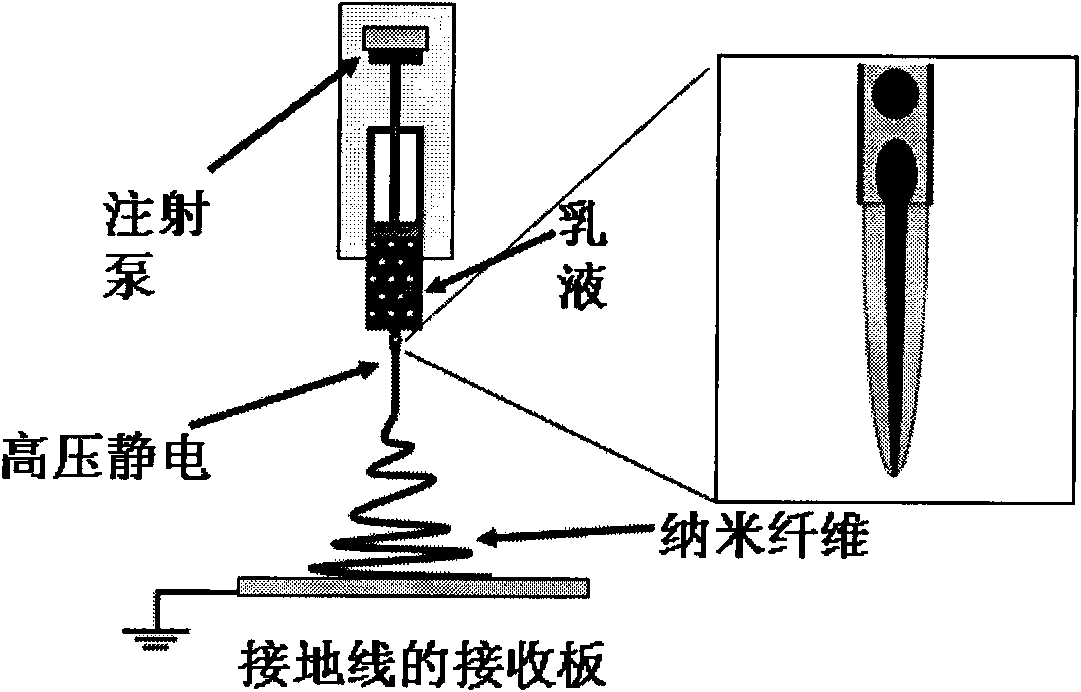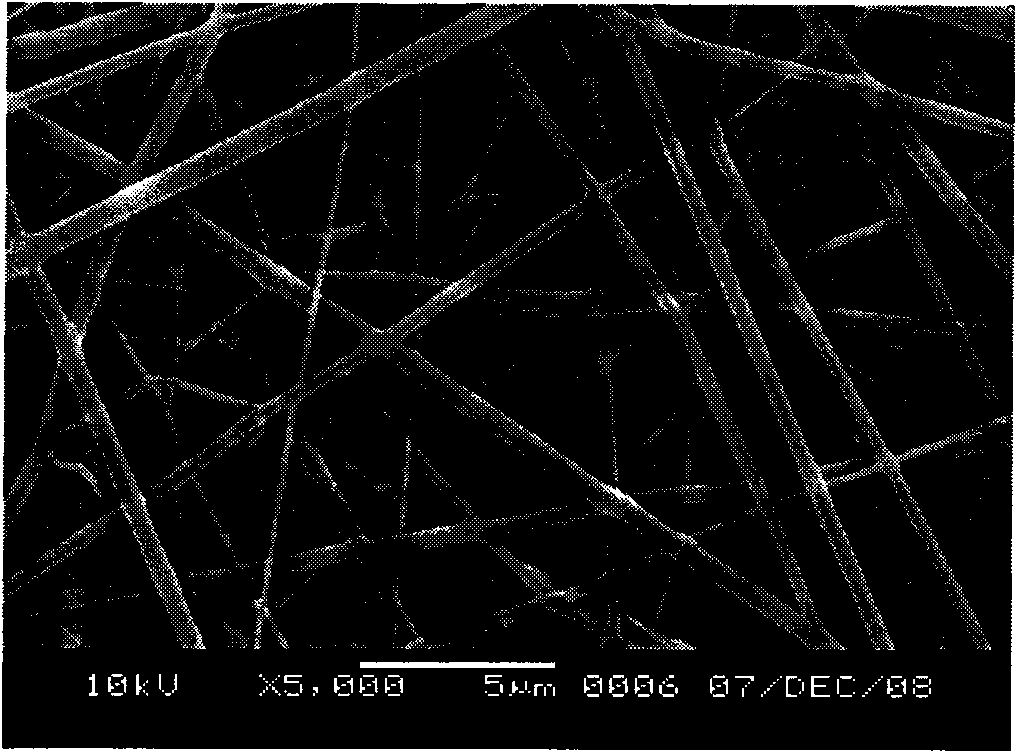Method for preparing alginate microsphere/high polymer composite nanometer fiber by electrostatic spinning
A composite nanofiber and alginate technology, applied in wet spinning, fiber chemical characteristics, rayon manufacturing, etc., to achieve good economic benefits, broad application prospects, and simple operation
- Summary
- Abstract
- Description
- Claims
- Application Information
AI Technical Summary
Problems solved by technology
Method used
Image
Examples
Embodiment 1
[0030]Weigh 0.1g of sodium alginate with a balance and dissolve it in 10mL of ultrapure water, stir and oscillate to dissolve completely to obtain sodium alginate hydrogel; under stirring conditions, add 1mL of sodium alginate hydrogel drop by drop Add 0.05g SPAN-80 in 10ml of dichloromethane solution; then add 0.5ml of 5% calcium chloride solution by mass fraction, then continue to stir until a uniform and stable emulsion is formed; finally add 0.8g poly(lactic acid-caprolactone )P(LLA-CL)[75:25], continue stirring until the polymer is completely dissolved in the solution. Electrospinning was performed on the obtained solution, the applied voltage was 20kv, the receiving distance was 15cm, the spinning speed was 1.0mL / h, and the diameter of the spinneret was 0.9mm. The diameter of the obtained nanofiber is between 500nm and 1500nm, and the diameter of the microsphere attached to the fiber is between 1000nm and 3000nm.
Embodiment 2
[0032] Weigh 0.05g potassium alginate with a balance and dissolve it in 5mL ultrapure water, stir and oscillate to dissolve completely to obtain alginate hydrogel; under stirring conditions, add 0.8mL alginate hydrogel drop by drop Add 0.05g SPAN-80 into 10ml of dichloromethane solution; then add 0.4ml of 5% calcium chloride solution by mass fraction, then continue to stir until a uniform and stable emulsion is formed; finally add 0.7g poly(lactic acid-caprolactone Ester) P(LLA-CL)[75:25], continue to stir until the polymer is completely dissolved in the solution. Electrospinning was performed on the obtained solution, the applied voltage was 16kv, the receiving distance was 16cm, the spinning speed was 1.2mL / h, and the diameter of the spinneret was 0.9mm. The diameter of the obtained nanofiber is between 500nm and 1500nm, and the diameter of the microsphere attached to the fiber is between 1000nm and 3000nm.
Embodiment 3
[0034] Weigh 0.07g sodium alginate with a balance and dissolve it in 7mL ultrapure water, stir and oscillate to dissolve completely to obtain sodium alginate hydrogel; under stirring conditions, add 0.4mL sodium alginate hydrogel dropwise Add 0.02g Tween-80 into 5ml of chloroform solution; then add 0.2ml of 5% calcium chloride solution by mass fraction, then continue to stir until a uniform and stable emulsion is formed; finally add 0.35g poly(lactic acid-hexyl Ester) P(LLA-CL)[50:50], continue to stir until the polymer is completely dissolved in the solution. The obtained solution was electrospun with an applied voltage of 18kv, a receiving distance of 19cm, a spinning speed of 1.1mL / h, and a spinneret diameter of 0.9mm. The diameter of the obtained nanofiber is between 500nm and 1500nm, and the diameter of the microsphere attached to the fiber is between 1000nm and 3000nm.
PUM
| Property | Measurement | Unit |
|---|---|---|
| diameter | aaaaa | aaaaa |
| diameter | aaaaa | aaaaa |
Abstract
Description
Claims
Application Information
 Login to View More
Login to View More - R&D
- Intellectual Property
- Life Sciences
- Materials
- Tech Scout
- Unparalleled Data Quality
- Higher Quality Content
- 60% Fewer Hallucinations
Browse by: Latest US Patents, China's latest patents, Technical Efficacy Thesaurus, Application Domain, Technology Topic, Popular Technical Reports.
© 2025 PatSnap. All rights reserved.Legal|Privacy policy|Modern Slavery Act Transparency Statement|Sitemap|About US| Contact US: help@patsnap.com



